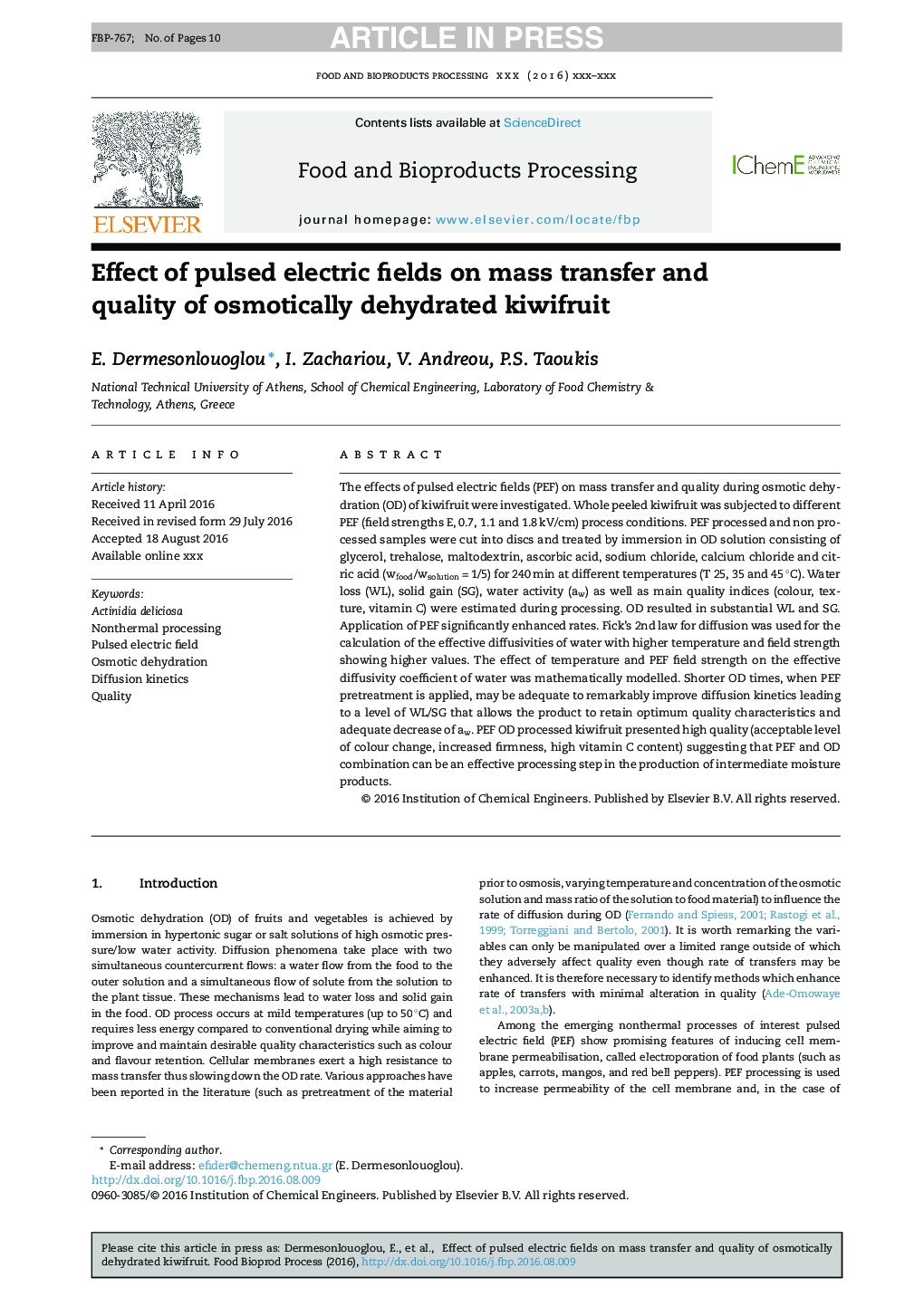| Article ID | Journal | Published Year | Pages | File Type |
|---|---|---|---|---|
| 6488437 | Food and Bioproducts Processing | 2016 | 10 Pages |
Abstract
The effects of pulsed electric fields (PEF) on mass transfer and quality during osmotic dehydration (OD) of kiwifruit were investigated. Whole peeled kiwifruit was subjected to different PEF (field strengths E, 0.7, 1.1 and 1.8 kV/cm) process conditions. PEF processed and non processed samples were cut into discs and treated by immersion in OD solution consisting of glycerol, trehalose, maltodextrin, ascorbic acid, sodium chloride, calcium chloride and citric acid (wfood/wsolution = 1/5) for 240 min at different temperatures (T 25, 35 and 45 °C). Water loss (WL), solid gain (SG), water activity (aw) as well as main quality indices (colour, texture, vitamin C) were estimated during processing. OD resulted in substantial WL and SG. Application of PEF significantly enhanced rates. Fick's 2nd law for diffusion was used for the calculation of the effective diffusivities of water with higher temperature and field strength showing higher values. The effect of temperature and PEF field strength on the effective diffusivity coefficient of water was mathematically modelled. Shorter OD times, when PEF pretreatment is applied, may be adequate to remarkably improve diffusion kinetics leading to a level of WL/SG that allows the product to retain optimum quality characteristics and adequate decrease of aw. PEF OD processed kiwifruit presented high quality (acceptable level of colour change, increased firmness, high vitamin C content) suggesting that PEF and OD combination can be an effective processing step in the production of intermediate moisture products.
Keywords
Related Topics
Physical Sciences and Engineering
Chemical Engineering
Bioengineering
Authors
E. Dermesonlouoglou, I. Zachariou, V. Andreou, P.S. Taoukis,
